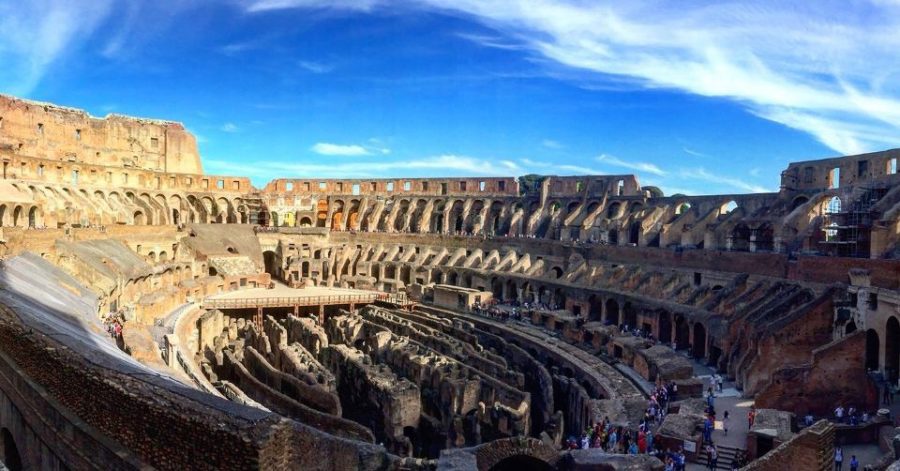The Roman Forum and Coliseum
May 22, 2017
Roars from the Emperor’s box can only mean one thing: the gladiator games are beginning! Rome’s truly rich history of an empire that was thought to be indestructible can be seen in the Roman Forum, Palatine Hill, and of course, the Coliseum. Considering these attractions are expansive and detailed, I recommend dedicating an entire day to them.
You can choose to see the Roman Forum and the Palatine Hill in the morning and the Coliseum after lunch or vice versa. For the most stunning photographs, I would suggest ending with the Coliseum right as the sun is setting through the arches.
You have the option for a guided tour or walking the complex on your own. Ensuring that you have a map before you start is a must. If you’re intrigued by history, there are audio sets to rent that walk you through each of the buildings. Regardless of what you choose, it’s best to purchase tickets in advance to avoid waiting in outrageous lines. Be aware that between the months of June and September, tickets may sell out while you’re waiting in line.
The Palatine Hill is where Rome was founded after Romulus and Remus had been taken in by a she-wolf. There is a beautiful statue to commemorate them on the hill. I recommend venturing to the Roman Forum, where every day Roman life took place, as well as visiting the Trajan Column. Be sure to stop by the golden center of Rome where the foreigners met when they arrived. A few other notable sites include the temple of Caesar, the temple of Castor and Pollux, and the sun temple.
The Coliseum is truly a magnificent wonder of the world. When you first see it, it will take your breath away and you’ll wonder how the Romans could build something so large. The arches and architecture are stunning and extremely well preserved. With four entrances that match the directions of a compass, you’ll enter at the north gate where the Emperor would have entered. The elliptical shape of the arena has excellent views from all sides and heights. Nobles sat in the ring closest to the sand while women and slaves had standing room only at the top of the arena where fires often broke out.
Currently the arena floor itself is being excavated and restored, so you can see the labyrinth of underground where slaves, gladiators, and wild beasts were kept before fights. Not only did gladiators fight one another, but also, faced exotic beasts such as ostrich, panthers, giraffes, tigers, and wolves. The animals would be left without food, water, or light for 3 days to encourage ravenous attacks. There were also several types of gladiators that were classified based on their weapons, armor, and nationality.
Before the games would start, the animal fights would take place. Something interesting that I learned on our tour was that Commodus (the evil future emperor of Rome in “Gladiator”) most enjoyed watching ostrich run and fight men and run in the arena. At noon, the executions of criminals occurred. Roman citizens were given an honorable death by sword stroke, while non-Roman citizens could have been burned, crucified, or eaten alive by any number of animals!
After a full day of Roman history comes alive you’ll be starved! There are several expensive restaurants near the sites. If you venture just a few blocks in any direction you can find numerous family owned Trattorias that will make you the best pasta and pizza you’ve ever had! Be sure to finish your evening off with a few scoops of gelato! Arrivederci!































































































































































